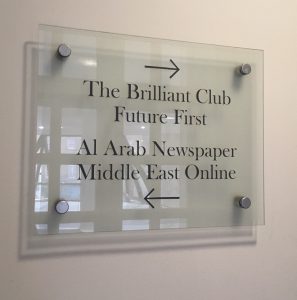During my four-week placement I will be working at the Brilliant Club, a charity which focuses on widening the participation of students from disadvantaged backgrounds at highly-selective universities. The charity runs a successful Scholars Programme which helps students to secure places at university by organising tutorials with PhD tutors for small groups of Year 6 to Year 12 students.
The charity is also in charge of running the Nuffield Research Placement in Greater London and Surrey which is the programme I am working on. The programme provides Year 12 students with the opportunity to complete a summer research placement in a STEM field thus enabling them to gain extremely valuable skills and experience, thus aiding them with their university application as well as equipping them with core competencies of a successful scientist.The scheme encourages applications from students with no family history of going to university, as well as those who attend schools in less well-off areas therefore the scheme greatly supports the idea of social mobility which I am greatly passionate about.
The reason why I’ve picked the Nuffield Research Placement scheme is because I completed a Nuffield Research placement at the MRC Clinical Sciences Centre located in the Hammersmith Campus of Imperial College in the summer of 2014. The placement has greatly influenced both my university as well as course choices – it’s one of the main reasons why I’ve decided to apply to Imperial. Having experienced the great impact of the scheme myself, I thought it would be a fantastic opportunity to see what the programme looks like from the other perspective whilst examining what social mobility is, what makes a successful social mobility scheme and what we can do to ensure to make such schemes even more effective, especially in the long term.
My first week
During the first week of my placement, I’ve focused on researching social mobility and looking at various social mobility related statistics which I will discuss later on, as well as seeing what running the programme for London and Surrey area entails. On my first day, we have visited students currently completing a placement at University of East London which has been designed to enable the students to develop key skills through independently carrying out research on a rapidly progressing area of science such as nanotechnology which will be of great help at university and beyond.
I’ve started my research on social mobility by reading a government issued report on the Social Mobility index, which looks at how well students from disadvantaged backgrounds do at school, and if they succeed later on in life. The educational attainment and outcomes achieved by adults serve as indicators of the extent of social mobility in the area, thus enabling the social mobility hot spots and cold spots to be identified. However, despite there being social mobility hot spots such as London, there is still a lot of work to be done to support students from disadvantaged backgrounds, especially from areas where opportunities are not within reach, in securing places at university, good jobs and throughout their studies, which I will discuss in detail in my upcoming blog posts.
